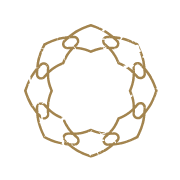Finding Joy in Training for life
Finding Joy in Training for life
I trained with a friend of mine the other day—an NYC fireman. As a kid, he did gymnastics, went on to become a solid Gaelic footballer, and, unsurprisingly, is strong as hell. What did surprise me, though, was just how mobile he is. Man can move!
The session was fascinating. When we met, he threw out some ideas for what we might do. As he spoke, it became clear that despite his physical prowess, his training had no structure or end goal. Without being too overbearing, I gently steered the session in a new direction and showed him a few things.
The joy on his face when that spark reignited—the love affair with movement—was incredible. His strength training had grown stale, and with just a few tweaks, he rediscovered something new in a thing he’d been doing for over 25 years.
But as heartwarming as that moment was, it wasn’t the biggest takeaway for me. Instead, it reinforced everything I believe about training and the philosophy we live by at Uptown Movement.
The Reason We Train
At Uptown Movement, our goal is simple: we want to help you build a sustainable movement and exercise practice—one that gives you the strength, mobility, and confidence to stay active and engaged with the world for decades to come.
We train to connect with our bodies, to understand the sensations we feel, and to move with confidence. We train for the science stuff, too—the bone density, the muscle mass, the blood pressure and sugar regulation, the cognitive benefits.
But most of all, we train to feel healthy, vibrant, and alive.
Goals: How We Get There
We set goals. Goals like building the endurance to climb a mountain, developing the strength to lift twice your bodyweight, or mastering a skill like a handstand.
But here’s the thing about goals—they’re tricky. We want to set them, but we don’t want to be too attached to them.
Goals Are Risky, But Not Useless
Unless you’re a professional athlete, achieving a goal is essentially irrelevant. Running a sub-3-hour marathon? That’s wildly impressive. Lifting twice your bodyweight? Puts you in the top 20% of strength worldwide. But in reality: you’re still numerically closer to the bottom 1% than the top 1%. Perspective, right?
Now, this isn’t about belittling the effort or sacrifice it takes to achieve something hard. Far from it. The pride and confidence you gain from setting a goal and seeing it through? That’s massive. It’s just that in the grand scheme of things, the outcome doesn’t matter nearly as much as the journey. It also helps the ego and competitiveness at bay, ultimately reducing the chance of injury when we think the number is only slightly less mediocre than the next person.
Why Bother With Goals at All?
So, if the outcome isn’t the point, why bother setting goals?
Well, for one, they’re fun. They give your training structure, direction, and consistency. They’re like way markers on a map—guiding you through the process while leaving room for play, freedom, and exploration.
From a physical perspective, goals also provide tangible evidence of progress. If you set a goal to get your first pull-up, then by the time you achieve it, you’ve undoubtedly built strength and muscle. If you’re jumping from a 3-foot box, your bone density is improving whether you realize it or not.
The magic, though, is in the small steps along the way. Those little wins are where the real juice is. And as corny as it sounds, it’s the journey, not the destination, that matters.
Tying It All Together
My friend left that session with a road map—a direction and purpose for his training. After years of ticking boxes and going through the motions, he rediscovered how exciting training can be when it’s infused with mini side quests, new skills, and a clear sense of progress.
Training is something he already knows he’ll be doing for the rest of his life, but now, instead of aimlessly wandering, he’s got a reason to enjoy the process. And if simulation theory has taught us anything, life is all about enjoying the side quests. 😉
So, set some goals. Learn new skills. But don’t get too hung up on the outcomes. It’s the process—the trying, the learning, the failing, the growing—that’s where the real joy of movement lives.
